The Mamojà association, which has twenty-four wineries in the area in Sardinia known as Barbagia (more or less located in central Sardinia), has jumped into the world of wine mapping. It has generated a highly useful, easy-to-grasp and colourful map based on the geography of its territory. And just like it is with Etna’s Contrade and Barbaresco’s MGAs, this new map also helps wine lovers everywhere better understand not just the Barbagia territory but its magnificent Cannonau wines too.
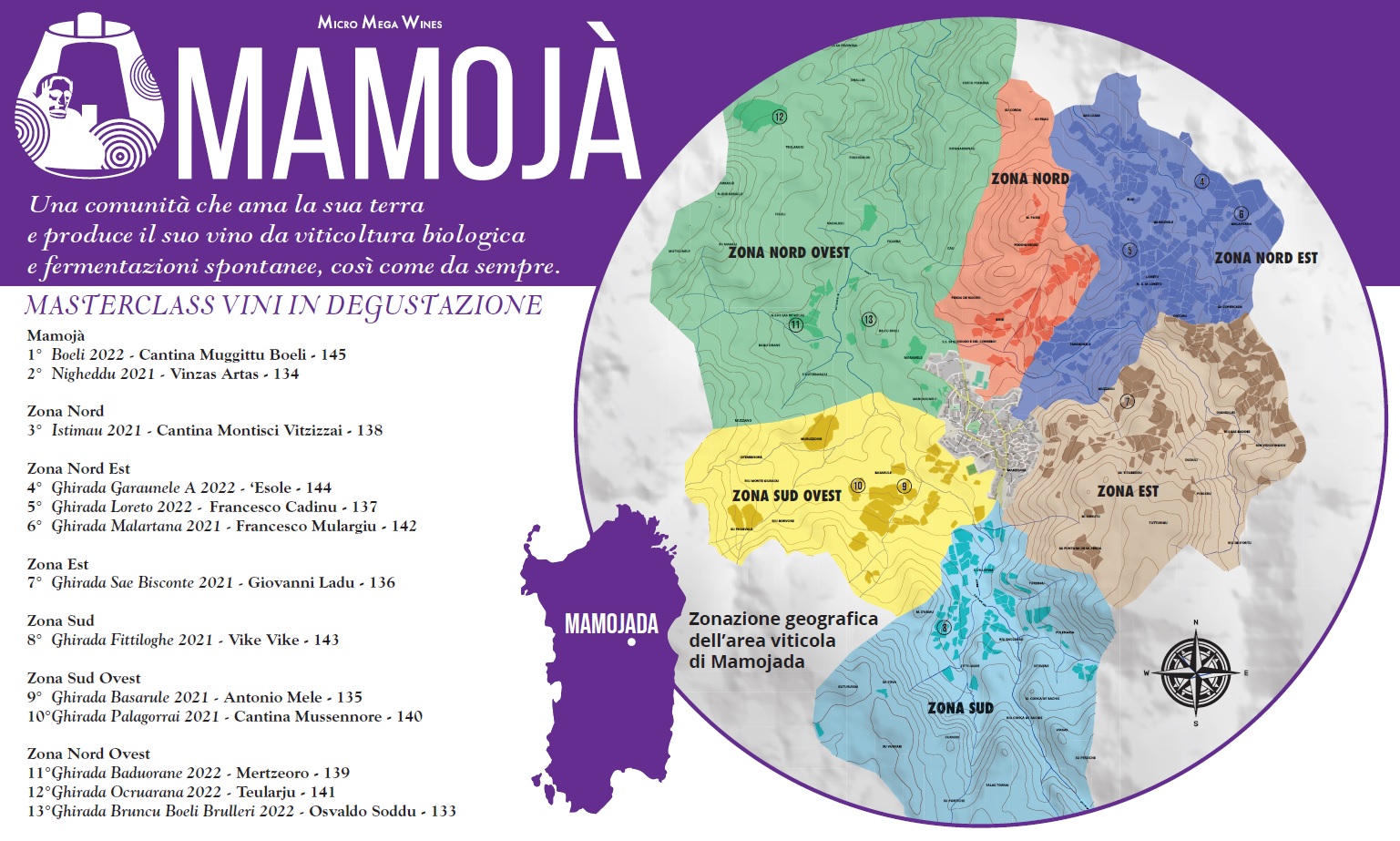
The place: do you know Barbagia?
Mamoiada is a village of 2,500 inhabitants located in the province of Nuoro and in th heart of Sardinia’s ruggedly beautiful and mountainous Barbagia area. The little agglomeration of houses that is Mamoiada is nestled in a land of often centuries-old vines planted at an average altitude of 736 meters above sea level. So yes, this is mountain viticulture all-right. The vines are for the most part bush-trained, with a small minority of spur cordon- and Gujot-trained vines. Some of the old vineyards are still ploughed with oxen; the average age of the vines hovers around 40-50 years old, but there are many 100-year-old vines too. The total number of hectares under vine is around 350, of which 95% are planted to Cannonau (though there is some debate, Cannonau is most likely a Sardinian biotype of Grenache, though many maintain it’s a distinct variety altogether) and 5% to Granatza (which is an indigenous Sardinian white grape variety that grows practically only in Barbagia). Actually, there are also some vines of Monica and Pascale scattered among the very old vines. These two are splendid red wine grape varieties also indigenous to Sardinia, but new plantings in the area are nowadays entirely dedicated to Cannonau and/or Granatza. The Barbagia boasts about 250 family wineries that mostly make wine for home use or sell it off as bulk wine. Of these, about forty bottle their wines, and twenty-four are members of the Mamojà association.
Possible categories of the Barbagia’s Cannonau wines
Cannonau wine producers of the Barbagia can only label their red wines either as Cannonau di Sardegna (which is a DOC) or as Barbagia Rosso (which is an IGT). Paradoxically, even though the latter is supposedly the lesser of the two wine categories (the DOC category is situated higher up in the pyramid of Italian quality wines than that of IGT wines) most of the Mamojada’s producers prefer to label their wines as Barbagia Rosso. This is because ‘Cannonau di Sardegna’ is an island-wide denomination, and therefore conveys little or no sense of place, given that Sardinia is the second biggest island of the Mediterranean and one of the world’s fifty biggest islands. It is, in other words, a continent unto itself, with myriad exposures, altitudes, micro- and mesoclimates. In Sardinia you can grow Cannonau high in the moutains and way down by the sea, so it’s hard to understand what a term such as ‘Cannonau di Sardegna’ might really mean, or is meant to convey. It follows that an island-wide label such as Cannonau di Sardegna, while it holds immense appeal to large producers and industrialists who look to source Cannonau grapes from anywhere at hopefully lower prices which to make good, affordable and large volumes of wine (not that there’s anything wrong with that), does not interest those producers trying to convey a somewhereness in their wines. Which is exactly what they are trying to do in the Mamojà association.
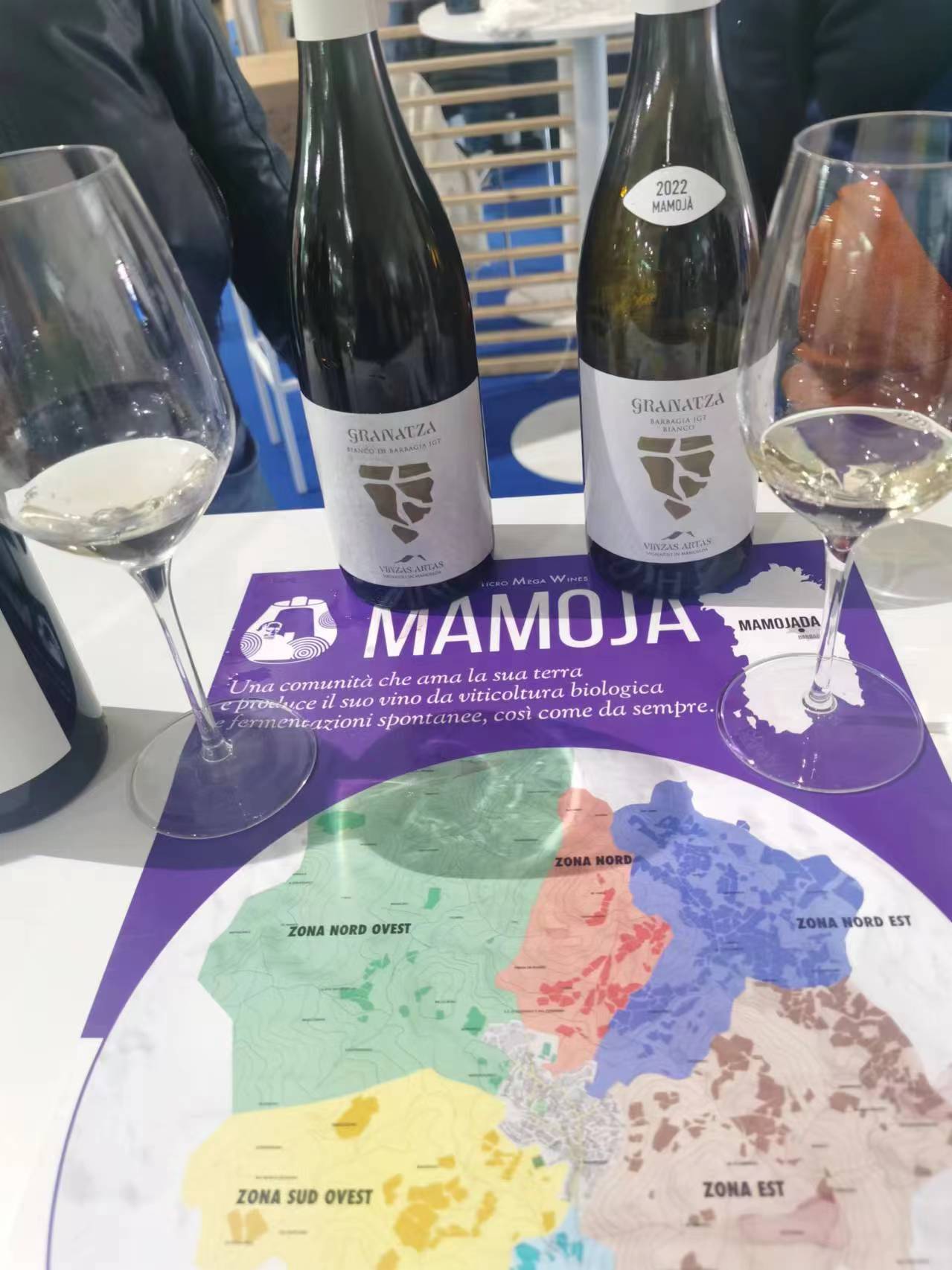
The Mamojà association has a stated goal of better characterizing their wiens so as to make them easier to understand and hopefully appreciate by consumers. For this reason their goal is to have different levels of Cannonau wines, easily identifiable by the wine category to which they belong. Years ago, the association already identified its ghirade, or single vineyard district areas that are comparable to the Etna’s Contrade and the MGAs of Barbaresco. However, they wished to better characterize the larger subareas in which their ghiradas fall into: given that the Barbagia does not have other towns, villages or communes that it could further identify its territory with (such as saint-Julien and Saint-Estèphe or Barbaresco and Neive), a geographic breakdown into valleys or subareas makes a lot of sense. In this light, the different levels of the Barbagia’s wines could be so broken down:
- entry-level wine simply called Cannonau di Sardegna or Barbagia Rosso, made with Cannonau grapes grown in the Barbagiaa territory around the town of Mamoiada only.
- The next level up is that of a wine that is made with grapes grown only in one of the six specific subareas that the association has identified after years of hard work and that are the subject of this report.
- Last but not least, the highest quality level of Barbagia wine of the mebers of the Mamojà association is the Ghirada, single vineyard district wines analogous to Barbaresco and Barolo’s MGAs and Etnas Contrade.
Clearly such a subdivision is not official, and neither is it the result of an official zonation process that is the work (should be the work of) of government institutions, but it is highly commendable that a private group of wine producers have at their own expense, worked together in an effort to broadcast their territory and its wines. It is, simply put, a nice story of human endeavour, passion, and goodwill, not to mention a message of hope for a better tomorrow. And not just in relation to the Barbagia, I may add.
Birth of a wine map on a geographical and territorial basis
Wine is beautiful because unlike other beverages such as soft drinks, it tells its origin through a a series of different expressions that are in relation to various factors that characterise the territory in which the grapes grow. The combination of the grape variety plus the physical, climatic and human factors of a specific area make up that area’s terroir (‘terroir’ is therefore not just the soil or climate: the grape variety and the human element are important components too).
The geographic area in which the member wineries of the Mamojà association have their vineyards does not present great geological differences (the soils are all made of granitic disintegration with sand and little clay), but it does have notable differences in climate and altitude. In addition, the choice of the harvest date, the longer or shorter maceration times, the use or not of whole bunches (and in what percentage), the use or not of new wood (and in what percentage) are all human factors of terroir that lead to wines that differ from each other, while maintaining many characteristics in common and typical of the Barbagia area. These differences between wines remain recognizable even when the wines were made in more or less the same manner, indicating that where the grapes grow specifically plays a major role in shaping what the finished wines taste like. And so, the association’s producers wished to better characterise their territory and their wines based on the on the geography (including orography, geology, climates) of their land, but also the historical memories of the inhabitants of their area, their anecdotes, scientific data, and internal comparative tastings within the association. [Relative to the acquisition and interpretation of the scientific data, the Mamojà producers were advised by Ruggero Mazzilli for the soil analysis and by Dario Secci of Baku Meteo for climatic data (the territory of the Mamojà association has fourteen weather stations.)]
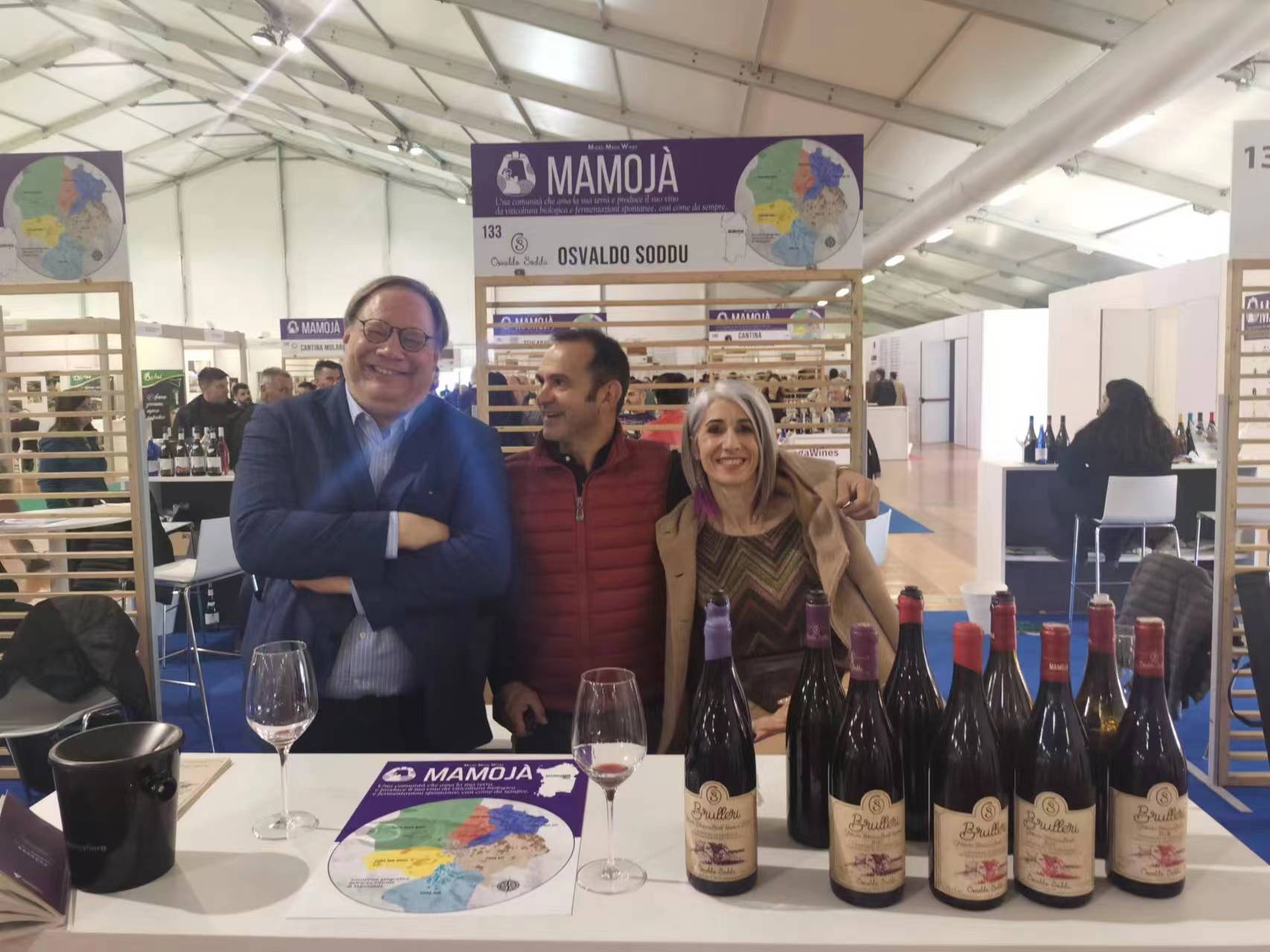
By combining all this information, the Mamojà association was able to draw up a geographical zoning of their Cannonau wine production area and to draw a map of their territory that clearly divides the territory into different geographic subareas. In view of the small area planted with Granatza, a differentiation of these wines by zone, unlike Cannonau, is not yet possible. Therefore, the map refers to the Cannonau wines only). Clearly, theirs is not a classic zoning, but an easy-to-read division of the territory for everyone, arrived at from an empirical basis. Six specific sub-areas have been identified and named after the cardinal points: north, northeast, east, south, southwest and northwest, each characterised by different altitudes, exposures, topographies, micro- and mesoclimates. And obviously, different wines too.
General terroir characteristics of the territory of the Barbagia area of Sardinia
The soils in all six subareas are granitic in nature, with outcroppings of metamorphic rocks of varying composition and colour; clays are rare. The most widespread texture is loamy-sandy with sandier banks localised in several vineyards. The presence of clay is limited and reaches significant percentages (>25-30%) only in a few lower-lying areas. The climate is characterised by cold winters and hot summers with fresh air currents coming from the sea to the east and from the south from the higher hills and mountains of the Gennargentu (about 20 kilometers away as the crow flies). There is also a wide temperature range, with good averages throughout the territory. However, the climate is influenced in the individual ghirada (vineyard district) by its orographic, valley or slope position and exposure. For example, the Mamojada’s annual rainfall is good at 700/800 ml per year; but it is higher in the subareas of the western half compared to the subareas of the eastern half of the Mamojada territory. By contrast, the eastern half of the Mamojada territory is more ventilated and cooler than the western sector.
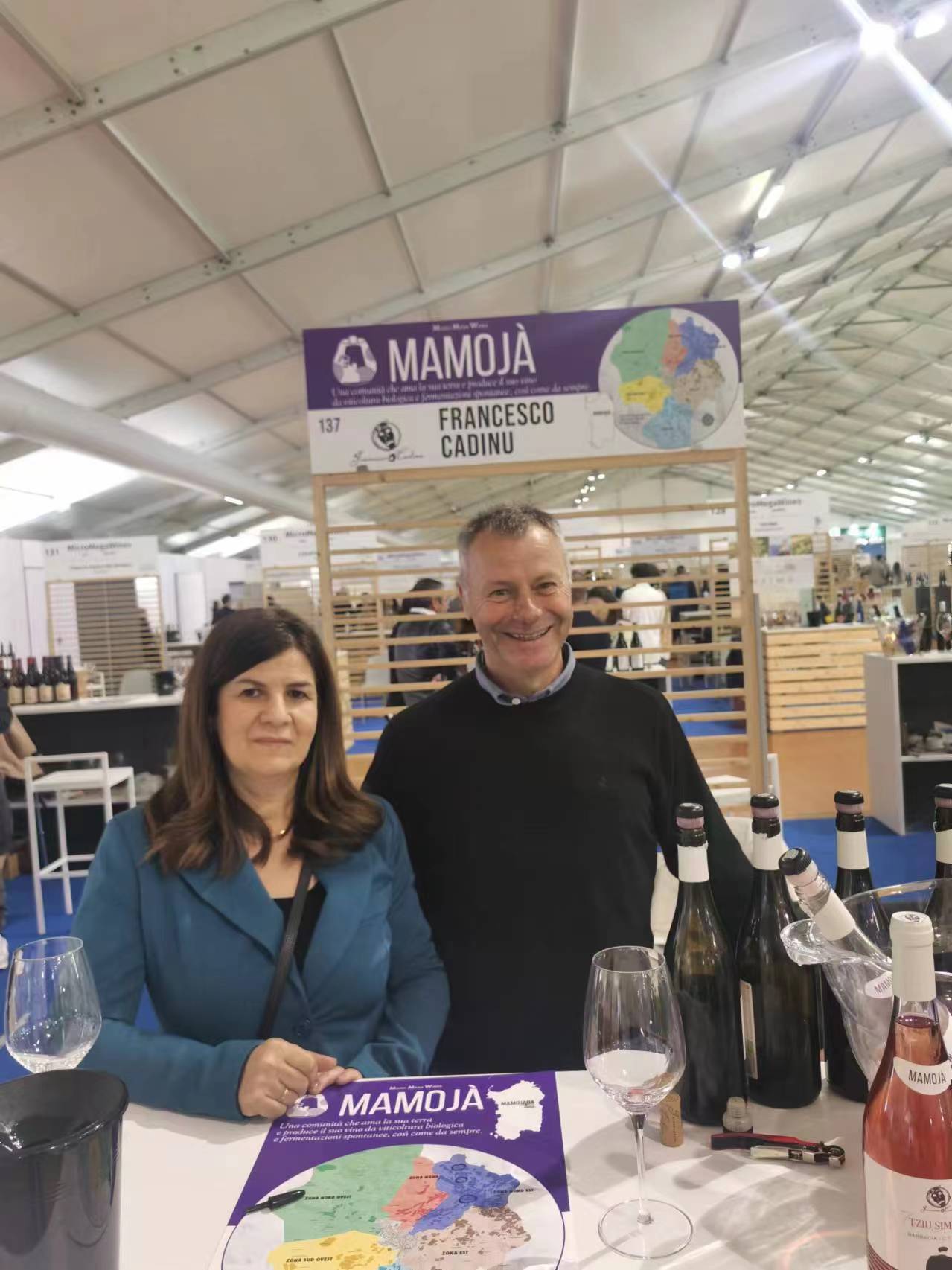
Each of the six sub-areas identified on the Mamojà association’s vineyard map differ in terms of vineyard extension and various other terroir factors, such as altitude. It follows that the wines of each are also different, just as the producers themselves realized after tasting their wines and those of their colleagues throughout the years. Such differences help to distinguish between wines of the various Barbagia subzones. This is analogous to, for example, Bordeaux, where the wines of Margaux and Pauillac are very different from each other (even though they are both Bordeaux wines); or in Barolo, where the wines of La Morra are different from those of Serralunga; and in Burgundy, where the wines of Gevrey-Chambertin are different from those of Pommard. Clearly, it’s not that a Margaux is better than a Pauillac, or that a Barolo of La Morra is better than one from Serralunga: the point is that they differ one from the other, precisely because each is made with grapes that have grown in different places. After all, I think we can all agree that wine is not just any drink that can be replicated in every corner of the world and to be made to always be the same no matter where the grapes grow. Instead, it speaks clearly of its origin: better, of its terroir.
Specific characteristics of the six geographical sub-areas of the Barbagia and their wines
Although all the wines made in this part of Sardinia are clearly Cannonau wines from the Barbagia (and all of which are labelled, as mentioned at the beginning of this paper, either as Cannonau di Sardegna or as Barbagia Rosso), exhibiting notes of ripe (but usually never overripe) red fruit and Mediterranean scrub, but that in almost all cases also typically hint at citrus fruit, a highly typical note of the Barbagia’s Cannonau wines. Depending on where the grapes grow, the wines are usually at once rather silky and powerfully tannic, and alcohol levels, though high, are lower than one might expect given Sardinia’s climate. Undoubtedly, the high-altitude vineyards allow for wines that also usually have greater freshness than many other Cannonau wines from Sardinia.
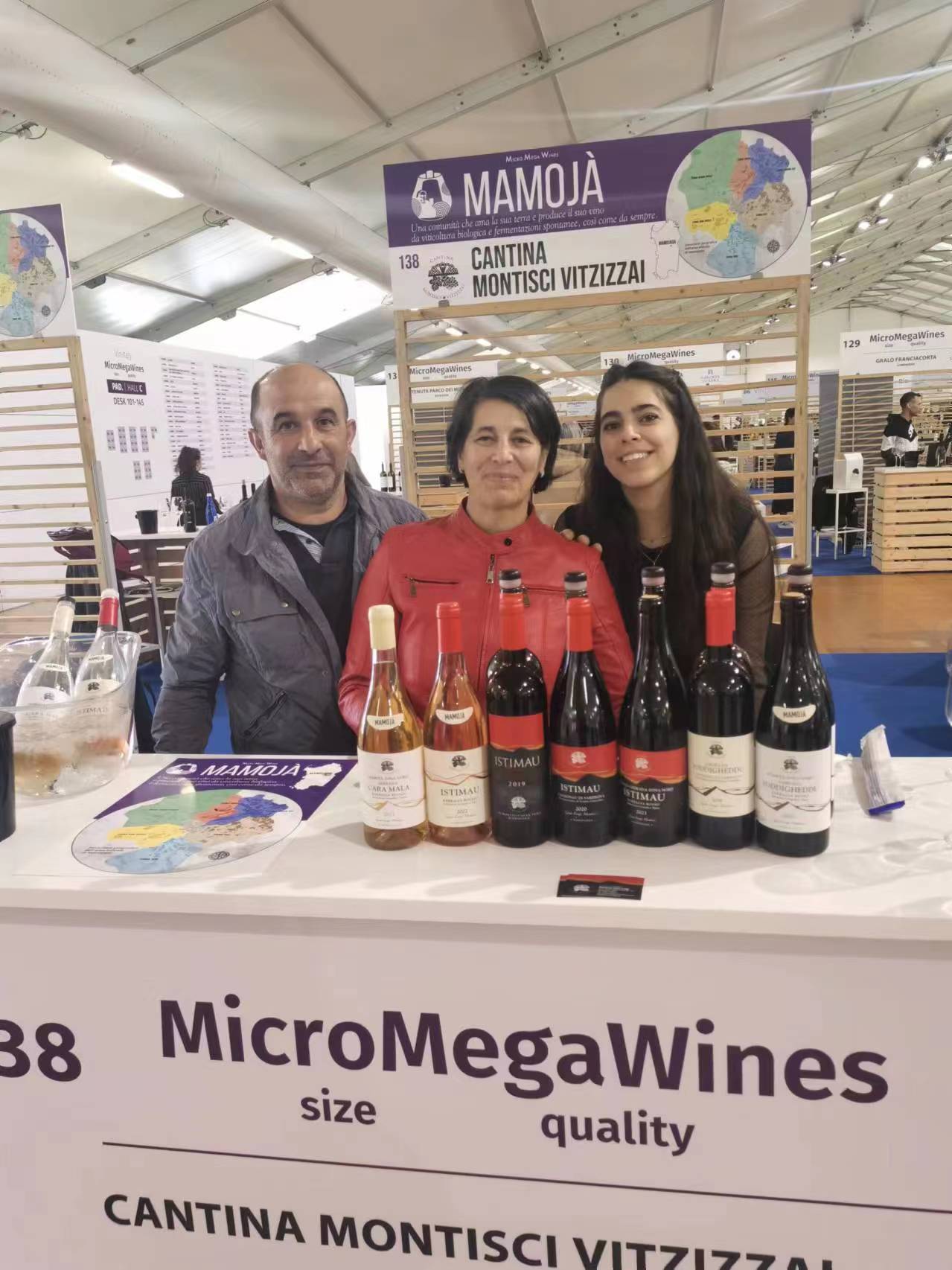
The salient points of each of the Mamojada’s six sub-areas and their wines are as follows:
- The northern subarea: It is the smallest of the six subareas of the Mamojada territory, though at 32 hectares under vine, its vineyard extension is comparable to many of the others that also hover around thirty hectares or so. The vines in this subarea grow at altitudes ranging from 598 to 719 metres above sea level. The prevailing vineyard exposures are south and south-west. There are some old bushvines still ploughed with oxen, while newer ones show high, flat sapling or short spur cordon and/or Guyot training (this is true of all the six sub-areas , so I won’t repeat it each time). The climate is characterized by average temperatures and rainfall, but importantly, the rainfall is concentrated in the spring-summer period. Interestingly, the temperature range is greater in the lower-lying valley sections than higher up on the slopes. The wines of this subzone are dark ruby red in colour, on the nose aromas of red fruits and jams and citrus notes, on the palate great structure with balanced tannins and good freshness. I could well be wrong, but my impression is that these are wines that can show excellent balance and are generally more politely-styled than those of the other five subareas of the Barbagia (on other words, not as powerful and not as deep, but probably easier to match with a greater array of foods and dishes).
- The northeast subarea: At 120 hectares under vine, the northeast subzone has the largest vineyard extension of all six subareas, which testifies to its ancient viticultural vocation. The vineyards are located at altitudes ranging from 609 to 750 metres, with the average altitude at which vineyards grow is of 670 metres above sea level. Exposures are varied. The soils are deep, sandy, and with some clay in those sections furthest from the village. This subarea is ventilated and relatively cooler due to sea breezes (on clear days, the sea is visible in the distance). Rainfall is lower here than in the western half of the Mamojada but still close to the territory’s averages. Maximum summer temperatures are not especially high, but there is noteworthy diurnal temperature variation, and especially so in down in the valley areas. The subarea has many old vineyards, (even 100 years old and more), still ploughed with oxen. Generally speaking, acidity in this subarea’s wines is more marked than in wines from other subareas and these are fairly elegant wines but that also boast noteworthy power.
- The eastern subzone: The subzone extends from an initial valley that climbs from the upper part of the village towards the Monte Orruttu (842 metres). At 102 hectares under vine, this is the subarea with the second-biggest extension of vines. The vineyards are located in two sections of the subarea: the first section has vines at 700 metres asl, and after a small plateau, again at 830 metres asl, so this is real mountain viticulture; then the slope descends and opens into another very wide valley and here the vineyards lie at about 760 metres asl on the border with the territory of Orgosolo (another town of Sardinia not that far removed from Mamojada). Exposures vary, and the soils are mostly of fine sand (with, not surprisingly, more organic substance in the valley floors). In this subarea too, there are many old vineyards that bear witness to its ancient vocation. Climate-wise, it does not differ much from the eastern subarea: both are more ventilated and cooler than the subareas of the western sector, but have less rainfall. The wines are darker in colour than those from most of the other subareas, boasting aromas of spices, balsamic oils and citrus fruits. Like the wines of the northeastern subarea, these are also wines characterized by very good freshness.
- The southern subarea: This subarea begins as a very wide valley starting from the southern outskirts of the Mamojada village and climbing both towards Fonni and up to the sanctuary of San Cosimo. The area under vine is only 37 hectares, despite this subarea being renowned for its ancient vine-growing tradition. Vineyards lie at altitudes of 620 metres but can be found as high up as 900 metres asl: in other words, real extreme mountain viticulture. In this subarea, the vines mostly face east. The soils are fine granitic sand but have a good supply of organic substance. Climate-wise, the southern subarea is closer to the characteristics of the western area, but has lower maximum temperatures in the summer due to the cold currents coming down from the mountains. Annual rainfall is good. The wines are a dark ruby colour in the valley areas and lighter in colour when made with grapes picked higher up along the slopes; the aromas and flavours are of mostly of red berries and citrus fruits with floral overtones. Importantly, these are some of the Mamojada’s Cannonau wines that express the most minerality and many rank amongst the territory’s potentially most impressive wines. I can see why this subarea’s grapes and wines were once highly thought of. Like in the case of the wines from the northeastern and eastern subareas, the acidity in wines from the southern subarea is also higher than that of the wines from the remaining parts of the territory.
- The southwest subarea: This valley is fairly wide and characterized by initially lower-lying slopes, but then rises sharply towards the tip of Monte Caprinu (1100 metres asl). The area planted with vines amounts to 38 hectares, with vineyards located from 600 metres to 685 metres asl. Vineyards face mostly north and northeast. The subarea has a good amount of topsoil, with granitic sand dominating but silt and loam are abundant in pockets, and there’s a good supply of organic substance. This subarea has good rainfall and a large diurnal temperature range (high summer daytime and low nighttime temperatures). The wine colour tonality is more variable than that observed in the wines of other subareas; the aromas are of berries and citrus fruits, but there is a bigger presence of herbal (undergrowth, cinchona) and leather nuances. Perhaps also because of slightly higher average alcohol levels, the mouthfeel of this subarea’s wines is creamier than that typical of wines from other parts of the Barbagia. It is by far the subarea in which the wines are the biggest, ripest and most powerful (in terms of alcohol level too: the grape just ripen easily and more here).
- The northwest subarea: This is the largest of all the six subareas, and perhaps not surprisingly, I find that the wines are also some of the hardest to define, They are mostly excellent, but show the greatest differences between wines made within a single subarea. The subarea runs from the lower part of the town towards the city of Nuoro and the Gonare mountain. The area planted with vines is only of 23 hectares. The vineyards are located from 570 metres to 630 metres asl, and exposures vary. Soils are sandy and rich in gravel and rocks, with a good supply of organic substance. The climate is characterised by good rainfall, with very high summer temperatures (some of the highest of all the subareas) but with good diurnal temperature shifts that help mitigate the daytime’s heat effects somewhat. Most of the vineyards are located close to the village and are surrounded by woods and pastures and hence benefit from strong biodiversity. Much like with the wines of the southwestern area, the wines of the northwest vary in colour more than is seen elsewhere in the Mamojada. And while aromas and flavours recall the Mamojada’s typical red berries and citrus fruits, the wines from this subarea offer stronger notes of spices and dried flowers. They are also some of the more tannic wines of all Mamojada.
Last but not least…
In conclusion, many congratulations are in order here, first and foremost to the producers of the Mamojà association for their spirit of collaboration: working together for the common good is never easy. It’s even harder in Italy, a country that is individualistic to an excess and where generalized poverty means that few people are truly willing to risk anything by going against the status quo in fear of upsetting the powerful). The Mamoyà producers can take pride in what they have done, something that very few denominations in Italy have been able to accomplish to this day (or have little interest in doing so). But creating a new key by which to understand their wines is an important step in helping wine lovers and wine professionals everywhere better know and understand the Mamojà area and its wines. Face it, many people out there don’t really know where Sardinia is located, never mind the island’s Mamojada area. Even fewer have heard of, or know anything about, Cannonau and its wines. Communicating in an easy to use and grasp manner the intricacies of their territory is a winning idea, one that will, in ultimate analysis, most likely also help the sales of these magnificent wines, creating new wealth for this magnificent part of Italy and its present and future generations. And allow me: their good wine quality aside, there’s plenty to admire, respect and like in all of that.
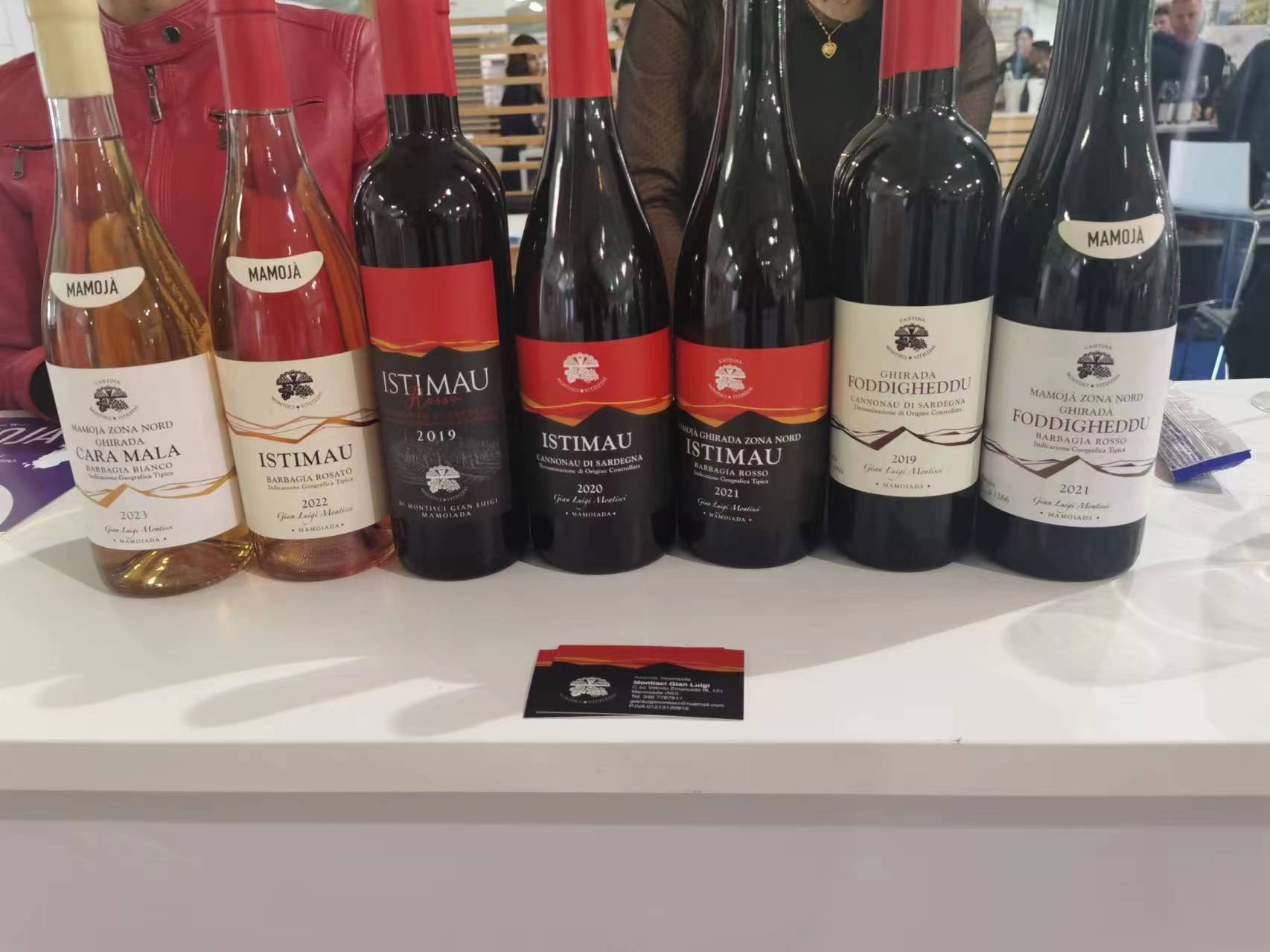
The wines in this tasting
All the wines in this tasting report were tasted at Vinitaly 2024 in Verona, on Sunday April 14 during a masterclass I guided devoted to the world premiere presentation of the viticultural map. A couple of wines from each of the six the subareas were included, and these were for the most part single-vineyard district or ghirada wines. For comparisons purpose, a few wines made with grapes from all over the Mamojada wine production area were also included.
Wines made with grapes from all over the Mamojà territory
Cantina Muggittu Boeli 2022 Barbagia Rosso Boeli 93
Bright medium ruby. Ripe but nicely piercing aromas of strawberry, raspberry, lead pencil and espresso, plus an exotic suggestion of tangerine. Thick and impressively concentrated, with lovely clarity of red cherry flavours that are full, deep, lush and very long. Very differently from Vinzas Artas, at Muggittu Boeli they aim to make classic, rich Barbagia wines and so pick late and when grapes are fully ruipe. This beauty sports 14.5% alcohol, but the wine is so well-balanced it doesn’t seem like it has that much alcohol at all. Well done. Drinking window: 2027-2032.
Vinzas Artas 2021 Barbagia Rosso Nigheddu 92
Full bright ruby. Tangy aromas of red cherry, blueberry, violet, minerals and exotic spices, lifted by a citrussy freshness. Offers lovely creamy sweetness and pliancy in the mouth but also shows excellent clarity of flavour and a penetrating quality to its berry and cherry flavours thanks to harmonious acidity. Firm but sweet tannins nicely frame the sweet red fruit on the long close.The 2021 Nigheddu clocks in at less than 13.5% alcohol, but this is not surprising as Vinzas Artas is a producer known for wanting to make easier-drinking, fresher wines and who tends to pick slightly earlier than others. Drinking window: 2026-2031.
The northern subarea
Cantina Montisci Vitzizzai 2021 Barbagia Rosso Istimau 89
Luminous deep ruby. Very pretty aromas of violet, red cherry, red berries and herbs. Then more mintiness in the mouth, with fresh, zippy flavours of red fruit and Mediterranean scrub. The building tannins have a slightly gritty mouthfeel and leave an impression of underlying astringency. Istimau is made with grapes picked from the estate’s youngest vines and aged in 3000 liter barrels, but this specific vintage does not seem to me to be as successful as last year’s version, for example. I’m a big fan of Montisci Vitzizzai, which I really think is one of Barbagia’s best producers, but I suggest you try this estate’s Ghirada Foddigheddu wine, made from 80 years old vines, that is a real knockout this year. Drinking window: 2026-2031.
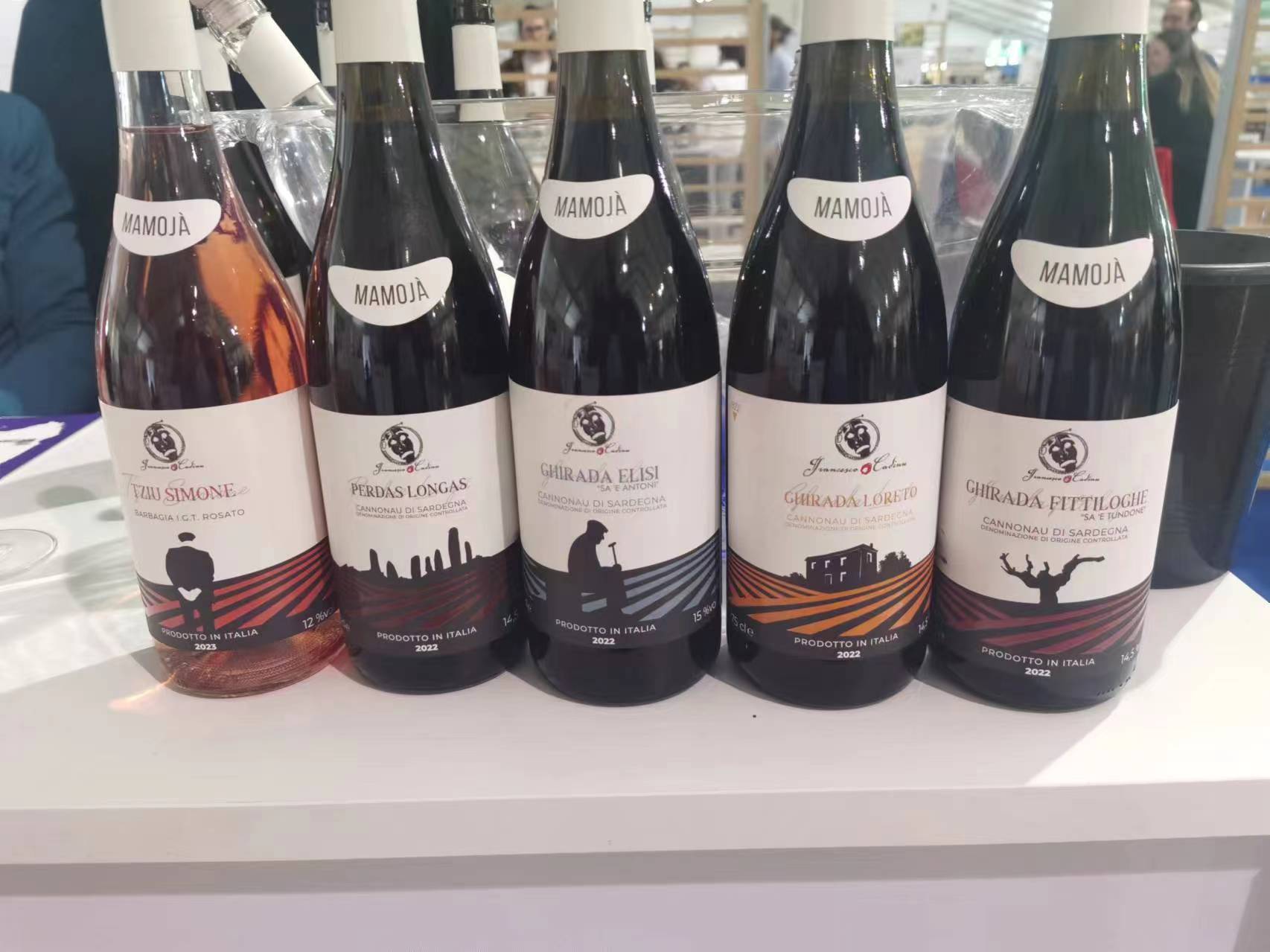
The northeastern subarea
‘Esole 2022 Barbagia Rosso Ghirada Garaunele 93
Bright, saturated medium ruby. Vibrant aromas of crushed raspberry, blueberry and mineral scents are enlivened by hints of blood orange. Fresh, youthful and a real fruit bomb in the mouth, with flavours similar to the aromas. Closes very long, with big, ripe tannins. I find this wine to be very interesting, in that the winery’s stated goal is to make fresher, easier-drinking wines and yet they have no problem balanced you won’t really notice all those octanes. Drinking window: 2026-2031.
Francesco Cadinu 2022 Cannonau di Sardegna Ghirada Loreto 94
Bright ruby-red. Perfumed, fresh floral aromas of red fruit, licorice and minerals. Boasts rich and ripely sweet flavours of juicy raspberry and candied violet that show excellent verve and nuance, thanks to lively but harmonious acidity. Solidly structured, suave, and very long on the fresh finish. Offers superb potential. At less than 14% alcohol, another example of a Cannonau wine from Mamojada produced with the precise goal of it being well-balanced, easy-drinking and approachable when young. Drinking window: 2026-2031.
Francesco Mulargiu 2021 Cannonau di Sardegna Ghirada Malartana 94
Ruby-purple. Strawberry, ripe raspberry, and red cherry are complicated by violet pastille, rose petal and licorice. Fresh and loaded with sweet fruit, but with a building firm mineral spine nicely framing the deep fruit flavours. Youthfully chewy and pliant, this is already good to drink now, but offers enticing glimpses into its future potential. The aftertaste is very long and offers subtle inner-mouth floral qualities. This is really outstanding and one of the best wines I tried from the Mamojada this year. From a roughly fifty-fifty blend of grapes picked from twenty- and eighty-years old vines, this was aged one year in cement and another eighteen months in bottle prior to going on sale. Drinking window: 2026-2031.
The eastern subarea
Giovanni Ladu 2021 Barbagia Rosso Ghirada Sae Bisconte 93
Bright deep red-ruby. Clean, fresh aropmas and flavours of steely red fruit, subtle baking spices and balsamic oils, plus a nuance of orange peel. Fresh and lifted in the mouth, with a laser beam of harmonious acidity nicely extending the red fruit and herbal flavours on the long back end. Only 13.6% alcohol and lots of vibrant flavours, this brand-new wine from Ladu (this is the first vintage) is a very good example of what the eastern subarea of the Mamojada wine production zone has to offer. The vines are about 80 years old, planted facing northwest at about 720 meters asl. Drinking window: 2026-2031.
The southern subarea
Vike Vike 2021 Barbagia Rosso Ghirada Fittiloghe 93
Saturated red-ruby. Wild aromas of raspberry, red cherry, truffle and wild herbs. Wonderfully dense and concentrated, showcasing compelling inner-mouth flavours of lively red fruits and sweet spices. Finishes with terrific length and freshness, with a minty and mineral nuance to the nicely persistent red fruit flavours. The 2021 vintage is a very strong in Barbagia and wines like this showcase why. Nicely done. Made from roughly fifteen years old vines, this is another Cannonau wine from the Barbagia that is purposely made in a refined, more approachable style. Drinking window: 2026-2031.
The southwestern subarea
Antonio Mele 2021 Barbagia Rosso Ghirada Basarule 91
Moderately saturated ruby. Piercing aromas and flavours of red cherry, musk and herbs. Then lively and mouthcoating, with a musky quality to the fruit flavours emerging on the long opure back end. Made with grapes from vines planted in 1980 at about 650 meters asl facing northeast. In the typical style of Mele, a more politely-styled red Mamojada wine from the area. Which is not at all surprising, given I believe Antonio Mele to be the area’s best producer of white wines (his Granatza wine has been my favourite two years in a row, and that’s got to mean something). Aged in 100% new French oak tonneaux for twelve months. Drinking window: 2026-2031.
Cantina Mussennore 2021 Cannonau di Sardegna Ghirada Palagorrai 88
Light bright red. Slightly closed, earthy aromas of red plums, forest floor, pipe tobacco and licorice. This has somewhat unforthcoming flavors of red berries, leather and spices, but could use a bit more clarity and cut. Finishes with rustic suggestions of leather, underbrush and musky herbs. A very traditional winery, this big wine comes across as slightly old fashioned, but then their 2019 Cannonau di Sardegna Riserva is absolutely exceptional. Those whom prefer crisper flavours of ripe fruit and less herbaceousness ought to try that knockout wine. Drinking window: 2026-2031.
The northwestern subarea
Mertzeoro 2022 Barbagia Rosso Ghirada Baduorane 95
Bright medium ruby. Highly perfumed, downright sultry aromas of raspberry nectar and cassis, lifted by hints of licorice, violet, cinnamon and minerals. Extremely primary and very pure, with sharply delineated cassis, red berry and mineral flavors of utter class and precision. Conveys a rare lightness of touch for a Cannonau wine, while finishing nicely subtle on the long back end. Aged twelve months in tonneaux. Drinking window: 2026-2031.
Teularju 2022 Barbagia Rosso Ghirada Ocruarana 95
Ruby-red. Expressive aromas and flavours combine perfumed fruit aromas (plum, cherry, raspberry) with mocha, minerals, and sweet spices. Sweet and silky, boasts strong suggestions of minerality. Closes long with even tannins and a hint of iron. Multifaceted, multilayered wine of noteworthy complexity and sexy fruitiness. Made with grapes picked in the highest part of a vineyard facing northwest, and planted on highly stony soil that is very hard to work. This is an absolute knockout. Drinking window: 2026-2031.
Osvaldo Soddu 2022 Ghirada Bruncu Boeli Brulleri 92
Medium deep red-ruby. Very minty red fruit and herbs on the nose and in the mouth. A noteworthy presence of menthol picks up where the fruit left off on the long vibrant back end. Made from one hectare of old bushvines facing southwest, and aged sixteen months in used French oak tonneaux. Drinking window: 2026-2031.


 中文
中文



